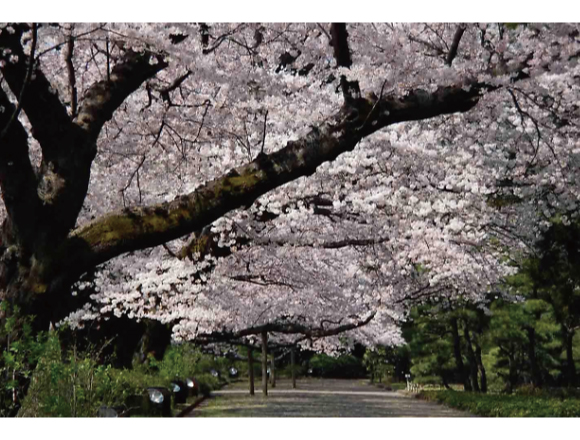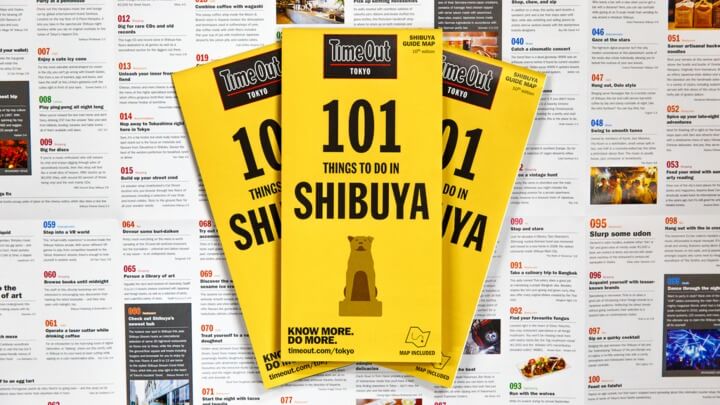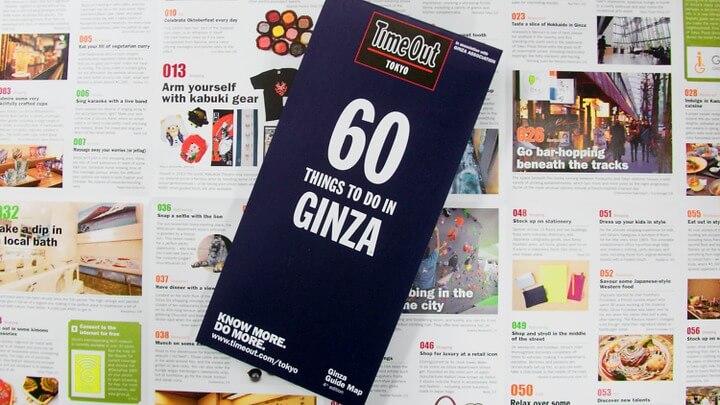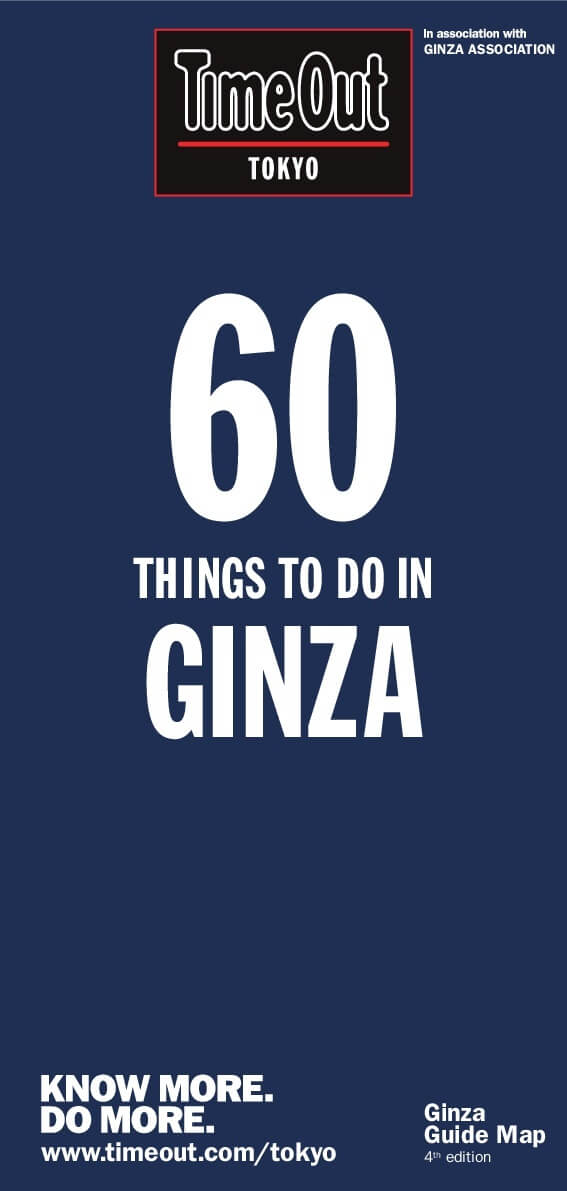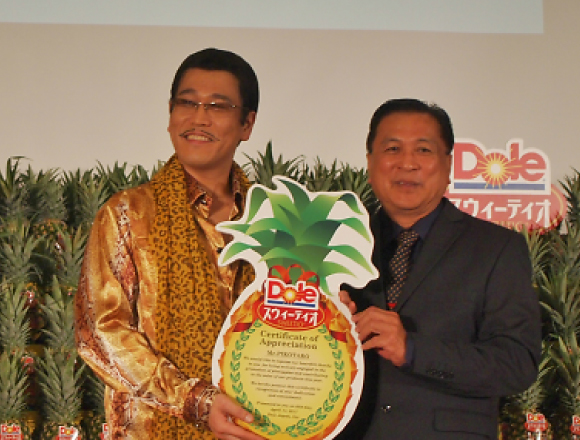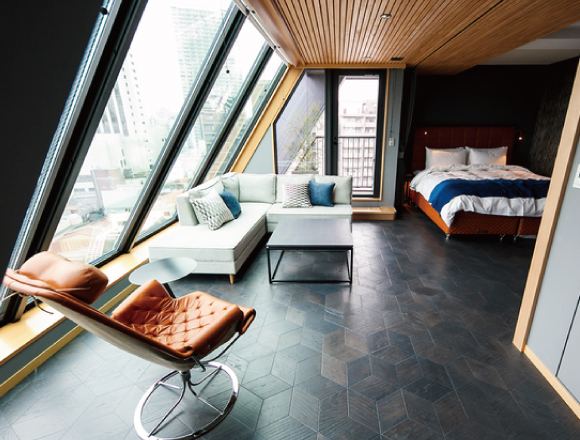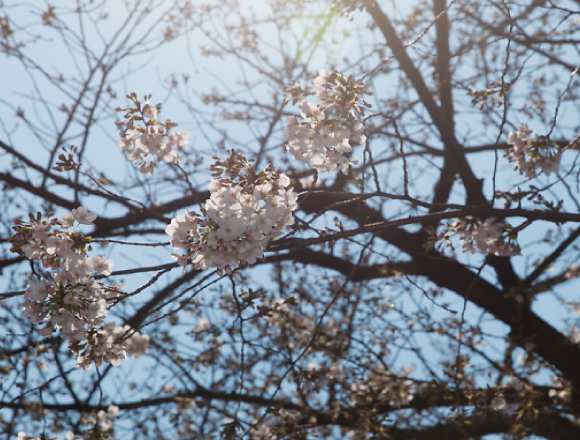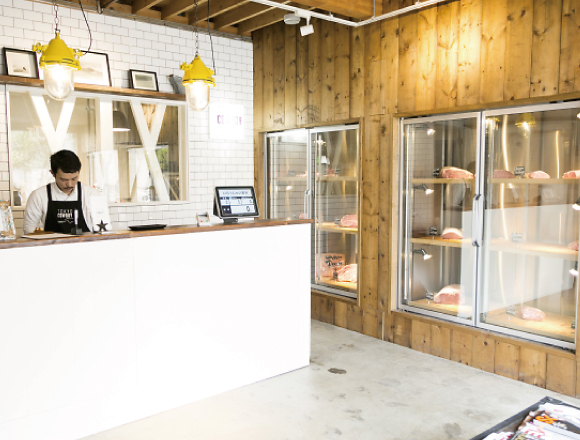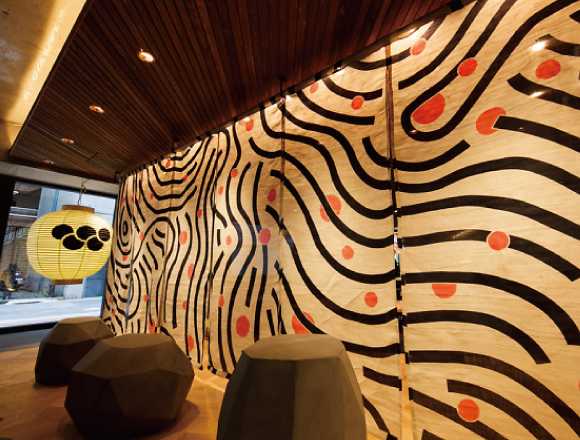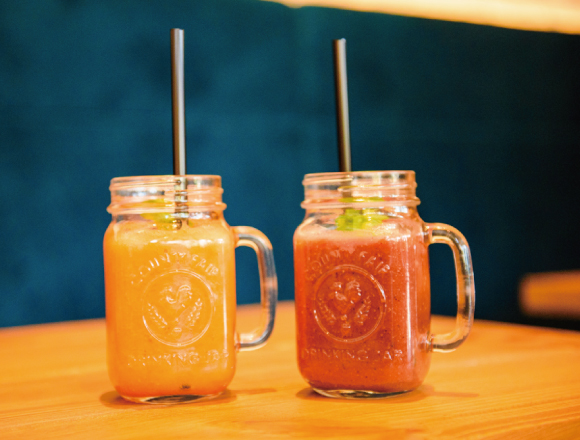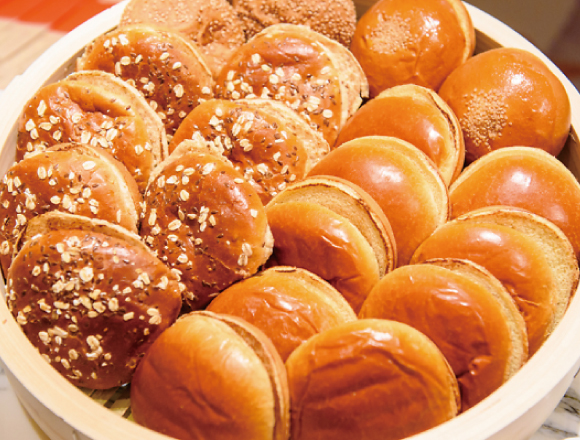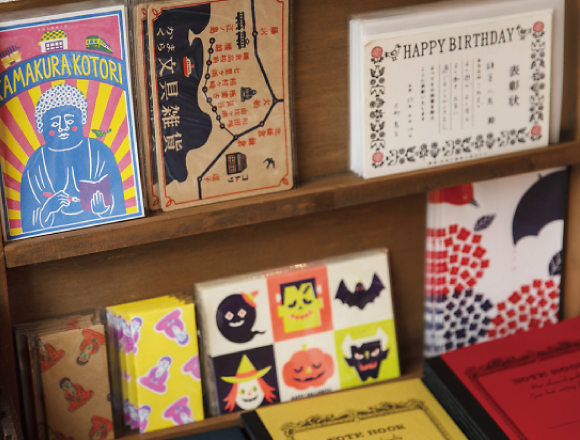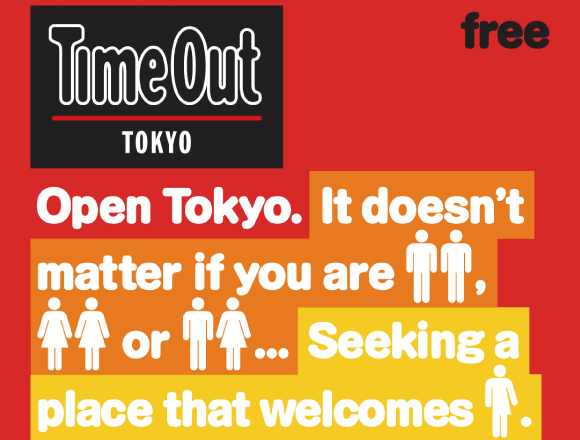The cold of winter has lifted and our great city is slowly switching gears into spring. In other words, Tokyo sakura season is just around the corner – the Meteorological Agency’s latest cherry blossom forecast sets the opening date for March 22, while ‘peak bloom’ is expected at around March 31. Although these divinations tend to change frequently the closer we get to the end of this month, there’s still no harm in planning ahead for your hanami. Here’s our pick of sakura-related events taking place in and around Tokyo, from lit-up gardens to full-on spring festivals, plus a few suggestions for your picnic basket.
RELATED ENTRIES
-
Time Out’s ‘101 Things to do in Shibuya’ 10th Edition English Guide Map Released
10.November.2018 | SPOT
The much-anticipated 10th edition of Time Outs’ 101 Things to do in Shibuya has been released. The English guide map has been published every year since 2012, detailing a whole heap of useful and interesting information for those interested in sightseeing one of Tokyo’s most popular locations. The new volume includes information on newly-built shopping complexes, the latest restaurants to hit Harajuku, the best bars to visits and more.
When Time Out launched 101 Things to do in Shibuya there were hardly any guides in English on Shibuya. There were many requests a guide map from foreign tourists during this time. Still today Time Out’s guide map series of Tokyo is the most popular.
New famous spots showcased on the map include the shopping complex Shibuya Stream which opened in September this year, the renovated MAGNET by SHIBUYA109, the music bar and lounge Sankeys PENTHOUSE, the conveyor belt dessert cafe MAISON ABLE Cafe Ron Ron and more. Also featured is a list of hot restaurants in Harajuku such as the popular soba noodle bar Matsubara An.
The pro of 101 Things to do in Shibuya is that it is written by native English speakers who are able to write about Shibuya’s many faces from a foreign perspective. The location line-up also includes many spots selected from a local perspective.
The guide map is free so pick up a copy yourself and find out all the information you need on tourist information centers, hotels, cafes, bars and more.
Information
101 Things to do in Shibuya (English Edition) – Volume 10
Website (Japanese): https://www.timeout.jp/tokyo/ja/things-to-do/shibuyamaped10
Time Out Tokyo|Official Homepage: https://www.timeout.com/tokyo
-
Time Out Tokyo Publishes 4th Ginza English Guidebook “60 Things to do in Ginza”
31.March.2018 | SPOT
Time Out Tokyo, which posts information about Tokyo in multiple languages, have published the 4th edition to their “60 Things to do in Ginza” guide map (English) which is aimed at foreign tourists.
“60 Things to do in Ginza” covers all the exciting things to experience while in Ginza and is one of Time Out Tokyo’s most popular city guide maps. They have continued to update it every year since the first edition was published in 2014. The second edition detailed shopping in Ginza, while the third focused on “experiences of traditional Japan” possible only in Ginza. The series has conveyed the attractive elements of one of Tokyo’s most popular districts.
The new 4th edition is the latest release and collects together a plethora of different topics from food to shopping, experiences and more. It lists 60 spots that even Japanese people run to, including Bar Yu-Nagi which is known for its cocktails that are made with organic fruit and veg; Ginza Uchikuan which is lined with rich individual bonsai plants; Konparu-yu, a downtown bath-house that opened in 1863. The list goes on. The guidebook was made with the viewpoint of foreign tourists in mind and contains plenty of information for first-timers to Ginza and frequenters alike.
The map is folded into A2 size and is convenient for both travelers and those out for a walk. There are around 400 places highlighted in the book, including various facilities throughout Ginza, as well as airports, tourist information centers, and more.
“60 Things to do in Ginza” is an indispensable tool for traveling in Ginza, so be sure to get your hands on one and use it as reference.
■Information
“60 Things to do in Ginza” 4th Edition (English ver.)
TEL: 03-5792-5721
Website:https://www.timeout.jp/tokyo/ja -
The battle for best burger in Tokyo just got even more competitive. Umami Burger, coming straight out of California, hopped across the pond to open their first location in Japan on March 24.
Sitting pretty in Aoyama, just a hop, skip and jump from Omotesando Station, the eatery’s name is a nod to the notion of umami, famously defined by Japanese chemist Kikunae Ikeda as a fifth, ‘savoury’ taste to complement salty, sour, sweet and bitter.
We showed up fashionably late on a bright Wednesday morning hoping to avoid opening week crowds, and even then there was a group gathered at the door, snapping pictures and eyeing fellow diners lucky enough to have already received their food. The queue disperses quickly though, thanks to a spacious interior designed to seat up to 70 people.

One bite of your first Umami Burger and you’ll instantly understand the hype. The bun is oh-so-springy, soft and a bit on the sweet side, but the patty is what really makes the joint stand out – it tastes just like meat should taste, but they’ve somehow managed to make it melt in your mouth too.
A friend who tagged along put it best: ‘It’s like they took a steak and ground it up to make the patty.’ No messing around blending in pork to reduce costs here. For our vegetarian friends, they have a falafel burger that looks dangerously delicious. Budget around ¥2,000-2,500 for a burger, side and drink.

However, what had us looking forward to the opening of Umami Burger for months was the opportunity to finally satisfy our truffle craving without having to pay an arm and a leg for the pleasure. Their Truffle Burger comes topped with truffle aioli, truffle-infused cheese and a truffle-glazed beef patty, which we of course paired with truffle cheese fries.
Because you can never have enough truffle, we then dipped said fries in truffle ketchup, and all the world’s problems melted away in a truffle euphoria. The ketchup enhanced the flavour of everything it coated, so we’d really like to see them sell it in takeaway bottles – just so we can go home and eat it with a spoon without attracting too many awkward stares.
-
Pikotaro just got a year’s supply of pineapples for ‘advancing pineapple awareness’
Everyone’s favourite viral hit after ‘Gangnam Style’, Pikotaro‘s ‘PPAP’ topped the charts last year despite being only 45 seconds long (it even won a Guinness Book of World Records mention for that).
With everyone grabbing apples, pens and pineapples to emulate the ’70s-clad jokester, not only the singer himself benefitted from his tune’s popularity: another big winner was fruits purveyor Dole, who deal mainly in – yes – pineapples.
Apparently pineapple sales spiked massively once ‘PPAP’ dropped, so to recognise such an extraordinary feat, Dole decided that it was high time to award Mr Pikotaro (he’s not quite a ‘Sir’ yet) with a Pineapple Appreciation Certificate for his efforts in ‘advancing the awareness and appreciation of pineapples’, as well as presenting him with… a year’s supply worth of pineapples.

The grand pineapple unveiling Before the actual award was presented in Tokyo earlier this week, those of us in attendance were fed some pineapple trivia, including some etymology (it looks like a pine cone but is a fruit, hence the apple bit), and a few pieces of sound advice (if in doubt between two same-size pineapples, choose the heavier one, and the flavour of a pineapple differs from the top to the bottom).
Then it was over to Pikotaro, who told us how ‘PPAP’ came about: the beat was inspired by a decades-old song, and while he heard the track, a pen was sitting in his hand and an apple was nearby. When he looked across the room, there was an empty can of tinned pineapples he’d eaten earlier in the day. And the rest, as they say, is (Guinness Record) history.
-
One for the discerning traveller – Wired Hotel is now open in Asakusa
12.April.2017 | SPOT
Tokyo’s hotel scene was long dominated by international mega-chains and soulless business hotels, but the immense tourism surge of recent years has brought with it an acute need for more rooms – and supply is finally beginning to catch up with demand.
In addition to the advent of Airbnb and smaller hotels springing up like mushrooms after rain, designer hostels such as Nui. have stepped in as alternatives, promoting themselves as ‘local’ and ‘individualist’ to attract customers.
The latest entrant into this growing niche is Wired Hotel Asakusa, which opened its doors to much fanfare on April 1 (no joke, we promise) and is part of the Café Company empire (the folks behind Wired Café).

Wired Hotel’s design and overall branding are the work of Portland-based creative agency OMFGCO, known for their Ace Hotel chain, who teamed up with Café Company’s resident designers for the project. Co-founder Jeremy Pelley and business director Danielle Higgins made the trip to Tokyo for the opening.
According to Pelley, ‘Café Company contacted us about creating a hotel centred around the community. I’d say 90 percent of the work was really theirs – we just stepped in to disseminate Asakusa’s and Wired Hotel’s stories to an international audience.’
As Portland and Asakusa are both home to quite a few artisans, OMFGCO injected this aspect into the hotel. ‘To realise a unique guest experience, we added products made by local craftsmen and displayed them in the rooms; guests will be able to buy some of the items too,’ says Pelley.


Inside, the designer feel is very pronounced – no corners were cut here. If you really want to get a taste of what that means, make sure to book room 1001 (the penthouse). Upon entering, it feels as if you’ve left Asakusa and stepped into an expensive New York City flat; a look through the window is the only thing that proves you haven’t, as the good old Hanayashiki amusement park appears in front of your eyes.
Remember to take a close look at the hairdryer bag, which is embossed with a design by Shin-Yoshiwara, a local brand that puts a bit of the Yoshiwara (Tokyo’s red light district) of old back into Asakusa. For a room as big as 1001 but with more capacity, check out 507, which can accommodate four and even has a balcony.
Both of these rooms go for a cool ¥50,000 a night, which rules them out for business trip or extended holiday purposes (unless you really have cash to splash). But the regular singles offer a bit more value at ¥10,000 a night: their bathrooms resemble those found in your average business hotel, but the rest of the décor is just as sleek as in Wired’s fancier rooms.
And if you’re looking to spend even less, opt for a bed in one of the five dormitories. A night on one of the luxurious Swedish Duxiana mattresses will set you back ¥5,000 – for that price, we’d argue it better be a damn good mattress indeed.
-
Tokyo’s sakura season is in full swing, but the hordes at the Meguro River, Yoyogi Park or Chidorigafuchi might be a bit too much to bear for those looking for a more serene hanami experience.
Enter the Sakurakan sento: this old-school public bathhouse down in Ota-ku’s allows you to ogle at the pink and white flowers while going for a refreshing soak.

Opened in 1959, Sakurakan is set in a quiet residential area and is rather easy to spot with its green-painted exterior. Admission prices are similar to your average sento: ¥460 for adults, ¥180 for children of elementary school age – but you’re getting a whole lot more than an average experience for your money.
Popular with locals for quite some time now, Sakurakan’s high ceilings, big windows and an open roof mean you’ll be able to spot the bathhouse’s cherry blossom tree while you soak and scrub yourself clean. The sento has recently been featured on Japanese TV and various websites, leading to an increase in patronage, but there’s still enough room for everyone.

To actually see the tree and its magnificent blossoms, you’re best off in the outdoor bath (rotenburo) on the ground floor, or at the eat-in space upstairs. The former boasts colonnade-high walls and big windows, and the branches of the cherry tree span wide enough to virtually extend into the building.
As one of the regulars, who has been frequenting Sakurakan for over a decade, put it: ‘The sakura petals float through the air and land in the tub when in full bloom. There really is no greater luxury in life – it’s a similar warming sensation as drinking alcohol, and something you can’t do at any other public bathhouse.’ Now that’s a recommendation.
-
Opened back in 2015 in a quiet, residential part of Setagaya’s Yoga, butcher shop Tokyo Cowboy has quickly earned a strong following among the city’s carnivores. Run by a two-man team, owner Nozomi Ueno and self-styled ‘meat concierge’ Takashi Ninomiya, who has been in the meat business for around half of his 31 years, the store is a worthy destination for anyone serious about their animal flesh.

Housed in a red-brick building formerly occupied by a vintage car retailer, Tokyo Cowboy evokes a casual West Coast feel and feels a world away from your average neighbourhood butcher. It deals exclusively in kuroge (black-haired) wagyu and brings in meat from across the country – more than any specific area, these fellows emphasise quality above all.

Even dedicated meat lovers may discover something new here, as the wares range from mainstay cuts such as sirloin and chateaubriand to more obscure bits that often don’t have a set English translation or aren’t cut like this outside of Asia.
These include togarashi (roughly top shoulder), kamenoko (lower thigh), maki (between the rib cap and small end rib roast) and misuji (lower shoulder flank), all of which are available by weight.
Most of the beef is cut to order by Ninomiya – a move that reduces waste to a minimum – but Tokyo Cowboy also stocks hand-minced meat for wagyu burgers, a grill-ready wagyu tasting set with several different cuts to compare and appraise, and elaborate gift boxes stuffed with roast beef. Their selection even goes beyond beef, incorporating imported cutting boards, frying pans and wagyu-compatible condiments.
One quirky feature is the ‘meat-keeping’ service, which lets you store your pound of flesh at the shop – it’s kept in a temperature-controlled case and only taken out when you ask for it.
Having formerly worked at an international financial firm, Ueno is happy to assist customers in English, and hopes that his shop can help broaden people’s wagyu vistas. ‘Wagyu isn’t all about branded beef,’ he says. ‘There’s a wide range of delicious wagyu out there, and I’d like our customers to get to know these lesser-known products as well.’
-
Looking to stay on the cutting edge of food, drink and shopping trends in Tokyo? Sure, keeping track of all the new restaurants, bars, shops and stands opening across the city every month can feel exhausting and almost hopeless – but that’s where we come in. Sparing you the trouble of wading through long lists of shiny promotional pics and hollow praise, we’ve again compiled a handy list of the top five spots to start business this month. Check out our editorial team’s picks below, and make sure to leave a comment if you think we missed something.
1) Cocomaru Theater & Café

Many Kichijoji film buffs are still reeling from the 2014 closing of Baus Theater, the neighbourhood’s finest independent cinema, so expectations are high for this new entrant that’s set to start business on April 15. Operated by film company Kokoro o Ugokasu Eigasha Maru, Cocomaru will be a cinema-meets-café complex set across three storeys. On the ground floor you’ll find a regular movie theatre with seats for 70, while the space upstairs will allow you to enjoy films and gigs over tipples.
2) Wired Hotel Asakusa

Conjured up by the team behind the ubiquitous Wired Café chain, this hotel sits just off Asakusa’s Hisago-dori. On the first floor you’ll find Zakbaran, a café-bar that non-hotel guests are welcome to use too. Sweets and snacks made from soy milk and tofu decorate the menu, alongside a strictly curated sake lineup. There are also ‘snack nights’ – think more Japanese ‘snack bars’ than nibbly bits. Rooms range from bright singles and doubles to a luxurious penthouse, and cater to a range of travellers.
-
You can now have a proper sit-down meal in Komazawa Park

Back in 2015, the Tokyo Metropolitan Government decided to organise an unprecedented contest, aimed at finding the best candidate for the city’s very first restaurant to be built inside a municipal park – Komazawa Olympic Park, in this case.
A few months later, Shinagawa-based corporation Create Restaurant Holdings won the bid, thereby setting the groundwork for the latest outpost of the Mr Farmer chain, which finally opened on March 15 this year.
The flashy, health-conscious eatery already had outlets in Omotesando, Shinjuku and Roppongi, with the Komazawa version offering a slightly powered-up version of Farmer-san’s figure-friendly but sadly somewhat overpriced menu, as well as – more importantly – serving as a disaster centre in times of serious need (no joke).

The shop interior is quite light and spacious, with a large window for you to peruse the surrounding park area while lazily kicking back with some eats and drinks. Menu-wise, there’s not much deviation from other Mr Farmer branches: the mainstay Spinach & Bacon Croque Monsieur makes an appearance, as does the Herb Roast Chicken with Quinoa and Tabbouleh.
As for dessert, the menu changes seasonally – our visit saw a particularly mouth-watering selection of vegan cakes. More noteworthy is the actual menu itself: Japan’s first ‘video book’ to be used in a restaurant is formatted like an actual book, with the touchscreen menu letting you browse explanations on all the ingredients used (in both English and Japanese) just like you were using a tablet.

-
Hailing from Santa Monica, The Counter boasts that it’s made over a million custom burgers since its founding in 2003: the pimp-it-yourself burger chain has a few dozen outposts in the US, and has also expanded as far afield as Ghana, Ireland, Malaysia and Mexico.
Now adding to that tally is the brand’s first Japan branch, The Counter Roppongi, which opened on March 31 on the basement floor of Midtown and offers relief to local patty-munchers hard hit by the 2016 closing of Baker Bounce. We headed over for a quick assessment on whether it’s actually worth all the fuss.

The Counter’s ordering system is both a picky eater’s dream and a decision-phobe’s worst nightmare: absolutely everything – bun, patty, toppings and condiments – involves a choice between multiple options. You’ll be given a sheet with a whopping 80 different things to choose from; just check the ones you’d like to pile on, and you’re good to go.
Still, the thing that surprised us most is that the price stays the same no matter how much you manage to stuff into one burger. That’s because prices are based on the patty size (¥1,190 for 170g, ¥1,390 for 227g, ¥1,590 for 312g).
This means that whether you want to keep it clean and just add a few pieces of garnish or hope to branch out into ‘Epic Mealtime’ proportions, the price won’t fluctuate (bar a number of ‘premium’ fee-carrying toppings). Now that’s service.
-
A perfect day in Kamakura How to make the most of your time in this picturesque town just south of Tokyo
02.April.2017 | SPOT
Kamakura, located less than an hour from the capital, boasts magnificent temples, fantastic restaurants and a popular beach. Famed for its Great Buddha as well as its seasonally changing landscape, particularly the hydrangeas that appear at the start of summer and the multicoloured splendour of autumn leaves, Japan’s first feudal capital is a big hit among those looking to escape the city for a day. It can get busy, so visit off-season if you want to escape the crowds. Read on for the ideal one-day Kamakura itinerary. Meigetsu-inThis wonderful temple is where you can see the four seasons of Japan through its round windows. But be warned: when the lush hydrangea on the temple grounds bloom and when the autumn leaves first appear it gets so crowded that queues often form before opening. To avoid the throngs, try going just before closing time. The admission fee is ¥300 (¥500 in June).189 Yamanouchi, Kamakura-shi (Kita-Kamakura Station). 0467 24 3437. Daily 9am-4pm (8.30am-5pm in June).
Meigetsu-inThis wonderful temple is where you can see the four seasons of Japan through its round windows. But be warned: when the lush hydrangea on the temple grounds bloom and when the autumn leaves first appear it gets so crowded that queues often form before opening. To avoid the throngs, try going just before closing time. The admission fee is ¥300 (¥500 in June).189 Yamanouchi, Kamakura-shi (Kita-Kamakura Station). 0467 24 3437. Daily 9am-4pm (8.30am-5pm in June). Kyorai-anOperating out of a charming house built in the early Showa era, these beef stew masters prepare their demi-glace sauce over three days, giving it a gloriously rich and meaty flavour. The beef, so tender it almost melts on the tongue, is spectacular. Note that no reservations or credit cards are taken.157 Yamanouchi, Kamakura-shi (Kita-Kamakura Station). 0467 24 9835. 11am-3pm (last orders 2pm), closed Thu, Fri (except for holidays). May close early on some days.
Kyorai-anOperating out of a charming house built in the early Showa era, these beef stew masters prepare their demi-glace sauce over three days, giving it a gloriously rich and meaty flavour. The beef, so tender it almost melts on the tongue, is spectacular. Note that no reservations or credit cards are taken.157 Yamanouchi, Kamakura-shi (Kita-Kamakura Station). 0467 24 9835. 11am-3pm (last orders 2pm), closed Thu, Fri (except for holidays). May close early on some days. -
The Time Out Tokyo blog Tokyoite – your daily guide to city life, news and culture
02.April.2017 | SPOT
Sure, Tokyo is pretty damn great as it is, but how can our city become even more amazing for all residents and visitors alike? Most of you would probably agree if we were to claim that accessibility and openness is one area with room for improvement.
Determined to unlock Tokyo for absolutely everyone, we’ve taken up the task of creating a truly inclusive guide to the capital. That’s right: ‘Open Tokyo’ is the theme of our spring issue, on shelf from March 30. Pick up your free copy and see the city from a different perspective, including everything from where to view art in a wheelchair to our picks of the capital’s best halal restaurants.
And there’s more: we also point you to the top picnic spots in town, offer a guide to kimono shopping, highlight some of the hottest new anime films right now and take you on a tour of sake breweries in Kansai. Don’t miss out – get your mag at any of our distribution points in the city or have it sent straight to your door by placing an order here.

